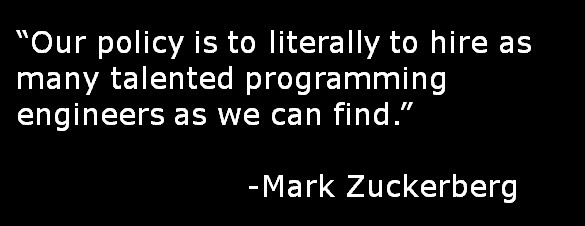Remember the days of painstakingly looping and swirling letters, trying to master the art of cursive handwriting? Many of us do, and for some educators, it remains a staple in the elementary school curriculum. But in an increasingly digital world, is Cursive Learning still a necessary skill, or is it becoming an antiquated practice?
This question sparked a lively debate in my own home recently, triggered by a simple note from my son’s teacher. Upon returning to school after an absence, he received makeup work instructions penned in cursive. The ensuing interaction highlighted the very core of the cursive debate.
“Mrs. Soandso,” my son began, note in hand, “Excuse me, I’m sorry, but I can’t read your writing.”
He politely returned the note. According to him, the teacher responded with a smirk and a look of disapproval, seemingly thinking, Another student who didn’t learn to read or write cursive. However, as she looked at the note herself, a puzzled expression dawned on her face. Something was amiss.
“Why didn’t you bring this to me sooner?” Mrs. Soandso exclaimed, “I can’t remember what I wrote!”
The irony was palpable. Even the writer of the cursive note couldn’t decipher it. This incident led our family, and now me, down the rabbit hole of the “Great Cursive Debate.” While some staunchly defend its place in education, arguing for tradition and supposed practical benefits, a closer look reveals that the arguments for cursive are becoming increasingly flimsy in the face of 21st-century demands.
Arguments for maintaining cursive instruction often hinge on points like tradition, the notion that “I had to learn it,” or the myth that cursive is faster than print. These arguments, however, lack robust evidence. To say something is important simply because it’s tradition is a logical fallacy. The “I had to learn it” argument doesn’t justify its continued relevance in a vastly changed world. And the claim of speed is demonstrably false. Studies have shown that there’s no significant speed advantage to cursive over print handwriting, and in many cases, print is actually faster and more legible.
Some proponents argue cursive is essential for signatures, a unique identifier of oneself. However, in our digital age, digital signatures are becoming more prevalent, and even traditional signatures are often less about elaborate cursive and more about a recognizable mark. The beauty argument, suggesting cursive is aesthetically superior, is subjective and often conflates cursive with the art of calligraphy. While calligraphy is beautiful, everyday cursive handwriting often falls far short of artistic merit.
Meanwhile, countries like Estonia are prioritizing future-ready skills. Estonia, a nation renowned for its digital advancements and often dubbed “E-stonia,” has incorporated coding into its primary school curriculum, starting as early as first grade. As Parmy Olsen from Forbes noted, the aim isn’t solely to produce future app developers, but to cultivate “people who have smarter relationships with technology, computers and the Web.” Estonia’s focus on coding reflects a forward-thinking approach to education, prioritizing skills that are directly relevant to the 21st-century landscape.
The Case for Coding Over Cursive
The shift towards digital literacy and computational thinking highlights the growing importance of coding skills. Madeline McSherry of Slate aptly describes coding as “the hottest skill on the job market, the modern-day language of creativity, and a powerful force in the economy.” There are compelling reasons to prioritize coding education in schools:
-
Language of the Modern World: Coding is the fundamental language that powers the technology we rely on daily. Understanding code provides a crucial understanding of how our digital world functions.
-
Cross-Disciplinary Applications: Coding isn’t confined to the tech industry. Its applications span across diverse fields, from art and music to science and engineering. It empowers creativity in digital media and offers valuable tools across various disciplines.
-
Entrepreneurial Opportunities: The digital age has witnessed a surge in young entrepreneurs leveraging the internet. Coding skills are a gateway to innovation and entrepreneurship, leveling the playing field and offering opportunities for anyone to create and build.
-
Future-Ready Skill Set: Coding is a highly sought-after skill in today’s job market and will only become more critical in the future. Proficiency in coding equips students with valuable, transferable skills applicable across numerous career paths.
Ian Quillian of Mindshift further elaborates on the broader benefits of learning to code, emphasizing:
-
Subject Mastery: Coding necessitates a deep understanding of the subject matter you are working with. To code effectively, one must first master the underlying concepts.
-
Systems Thinking: Programming inherently involves systems thinking, focusing on inputs, processes, and outcomes. It cultivates a logical and analytical approach to problem-solving.
-
Collaboration: Coding projects are often collaborative endeavors, fostering teamwork, communication, and shared problem-solving skills.
-
Passion and Application: Coding skills can be applied to any field a student is passionate about, allowing them to merge their interests with valuable technical abilities.
Learning to code cultivates essential 21st-century skills such as research, planning, outlining, collaboration, testing, and troubleshooting. It’s a demanding cognitive exercise that involves syntax, logic, and strategic thinking. Even if a specific programming language becomes outdated, the underlying programming skills remain invaluable, providing a solid foundation for learning new languages and adapting to evolving technologies.
Shifting Educational Priorities
While cursive handwriting may hold historical significance, its practical relevance in the 21st century is waning. The time dedicated to mastering cursive could be more effectively utilized in developing digital literacy and computational thinking skills. As technology continues to permeate every aspect of our lives, equipping students with the ability to understand, create, and interact with technology is paramount. The debate isn’t about completely abandoning handwriting, but about prioritizing skills that are truly essential for navigating and thriving in the modern world. Perhaps, like leeches in medicine, cursive has served its purpose and it’s time for education to fully embrace the future.
